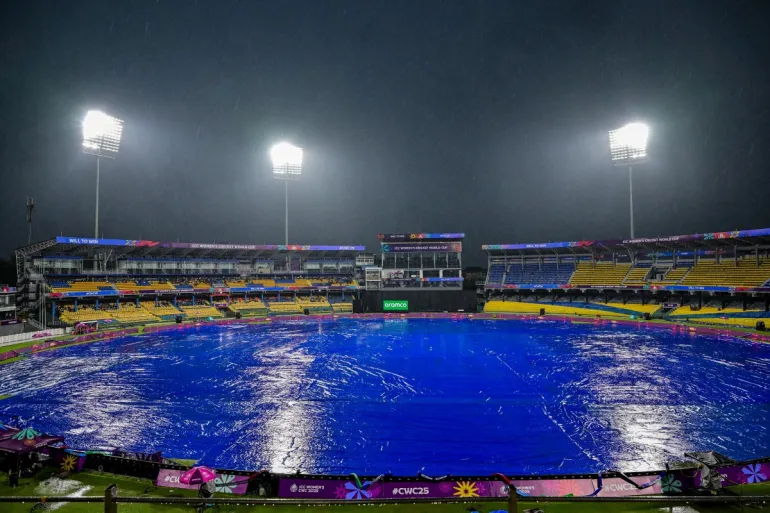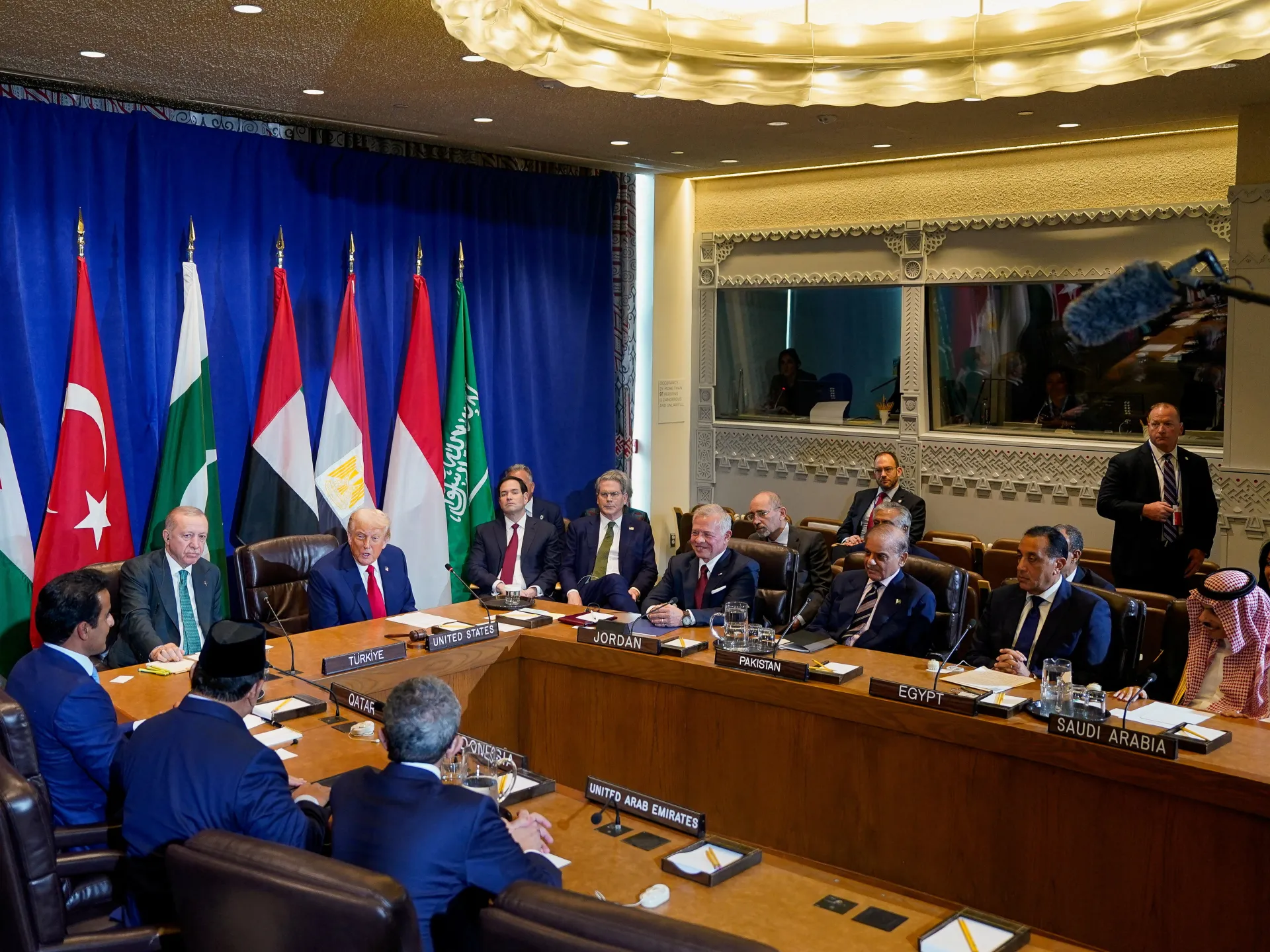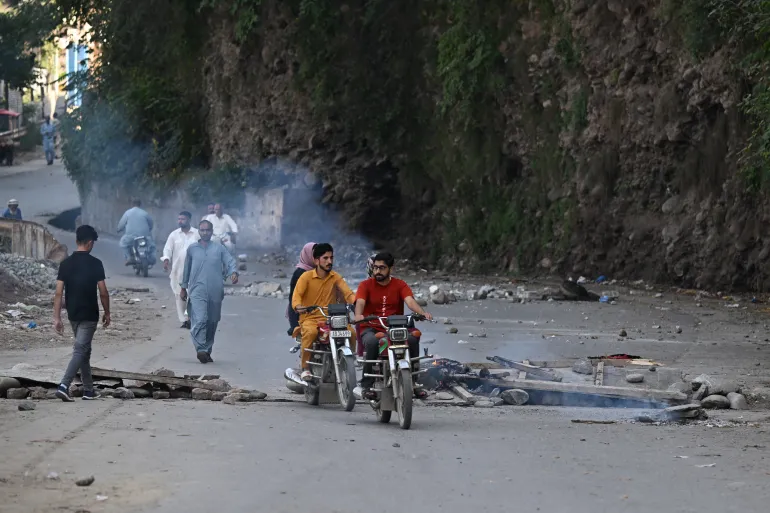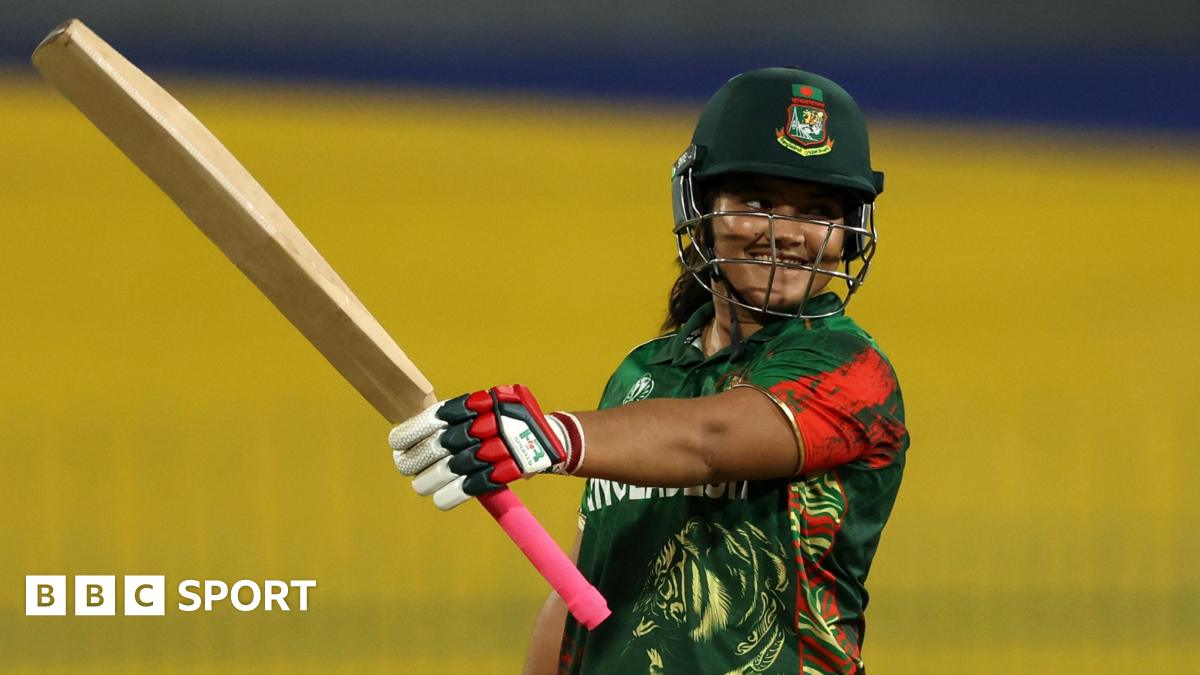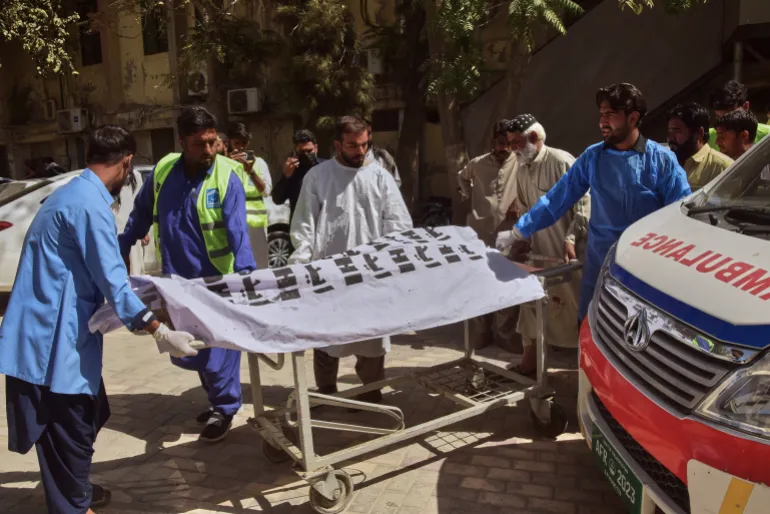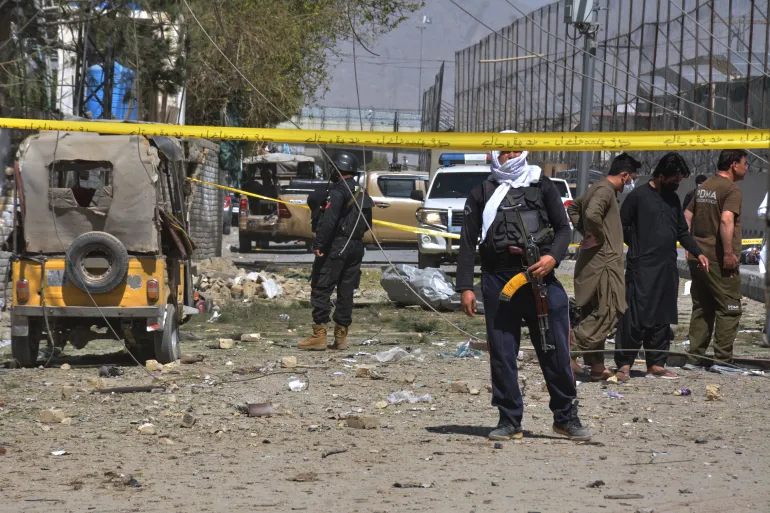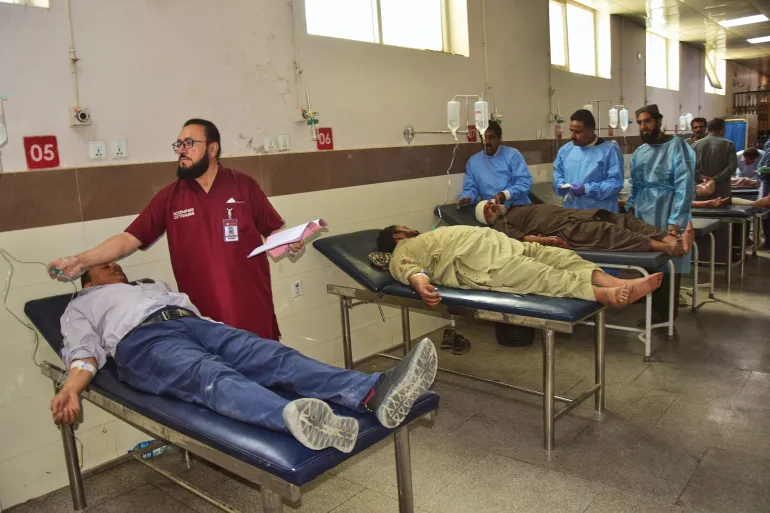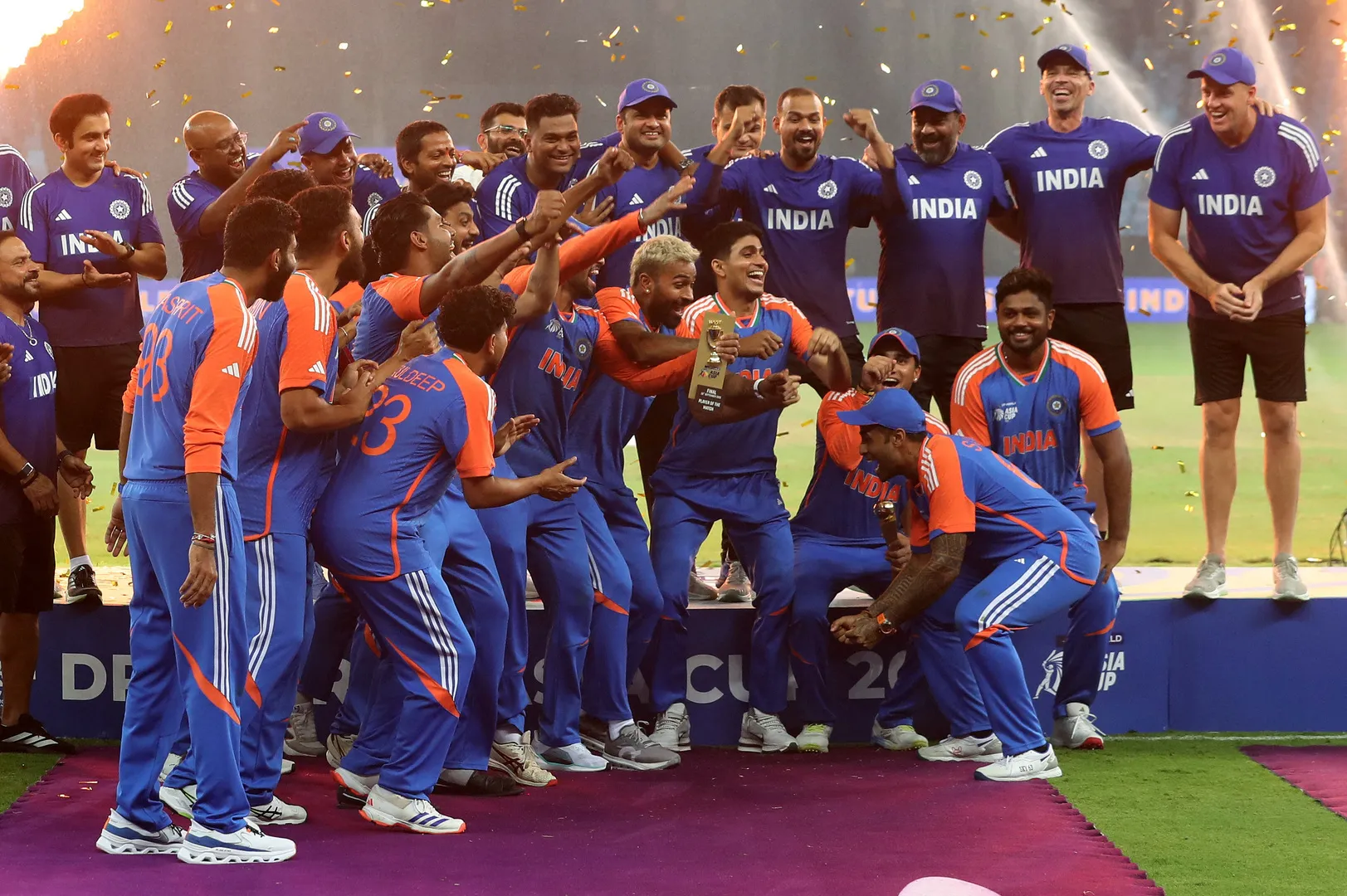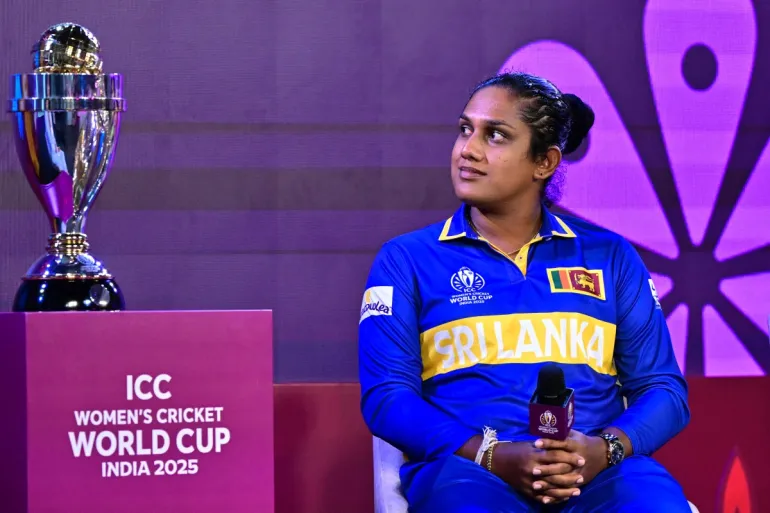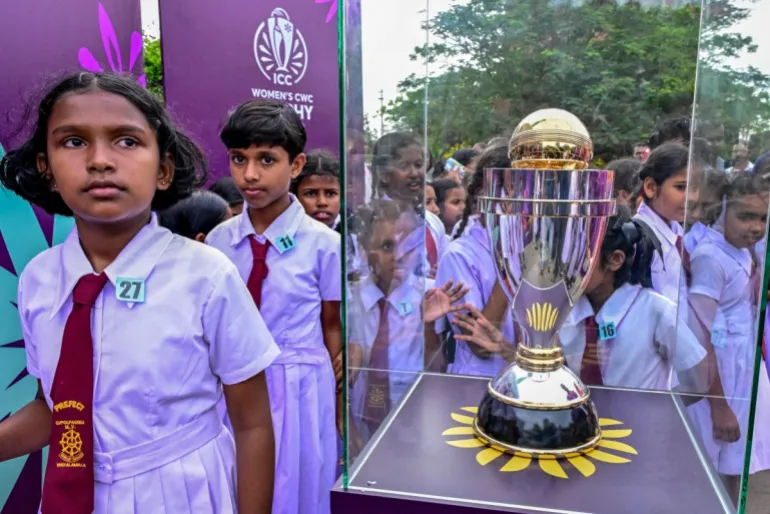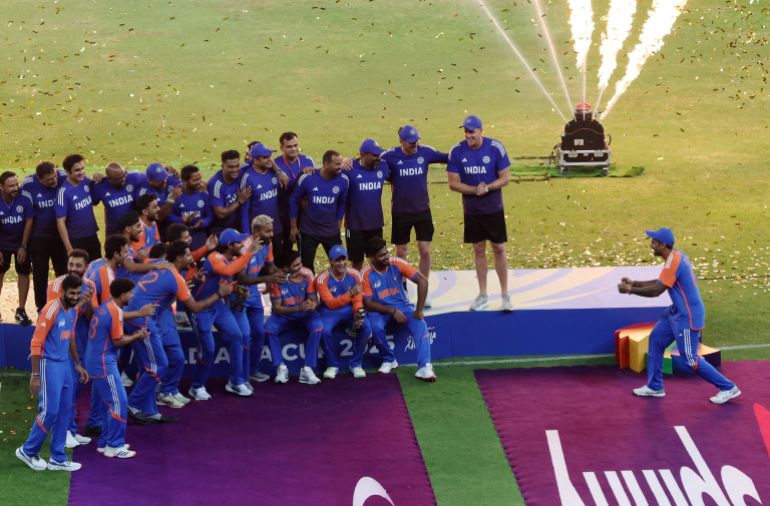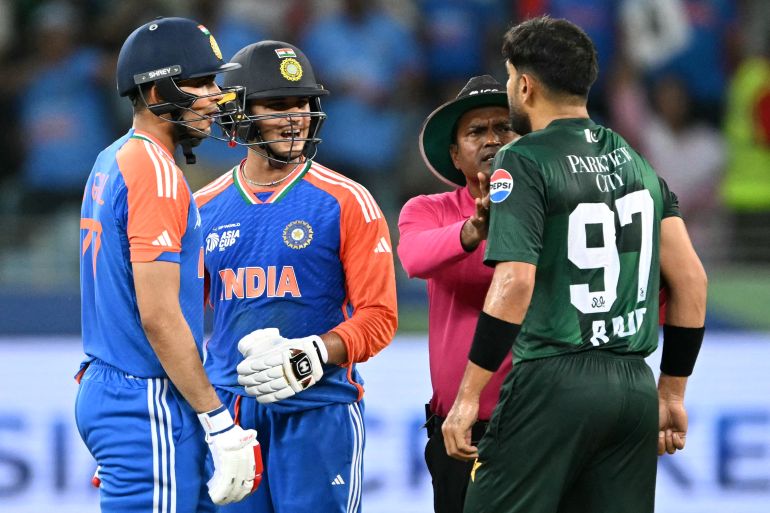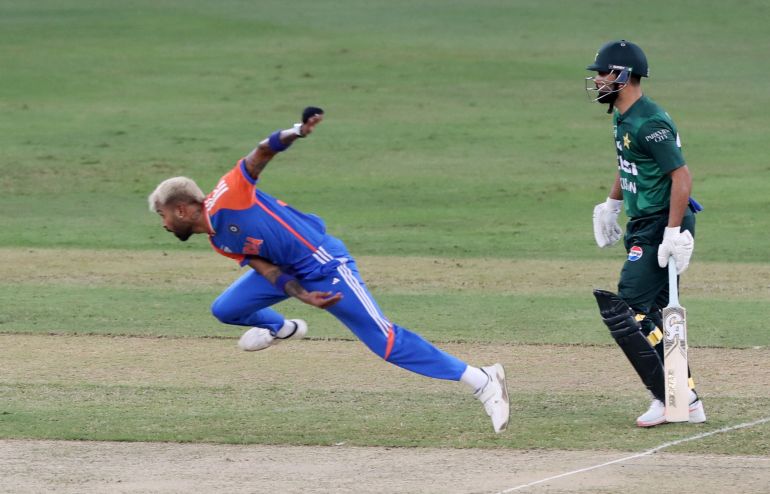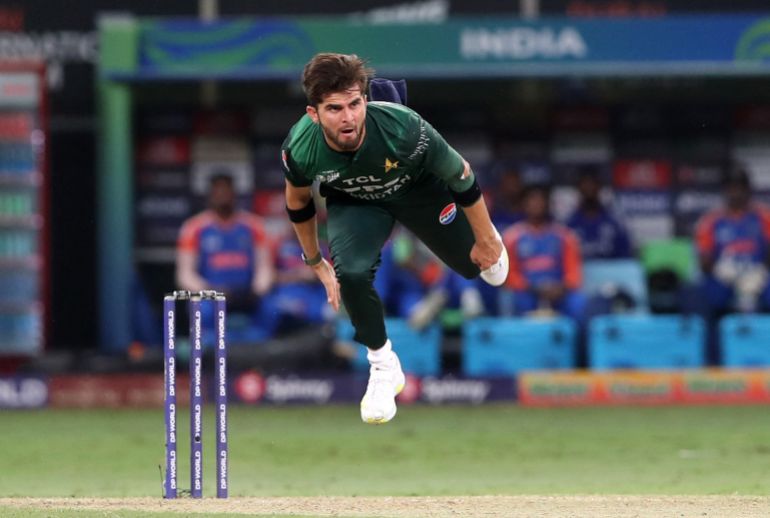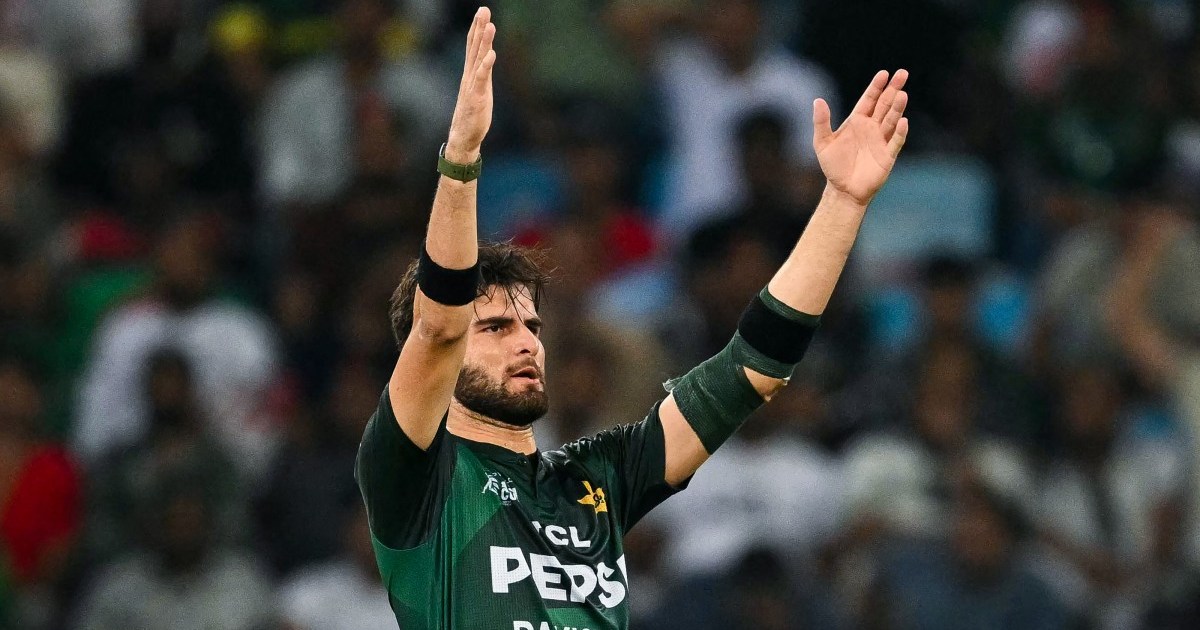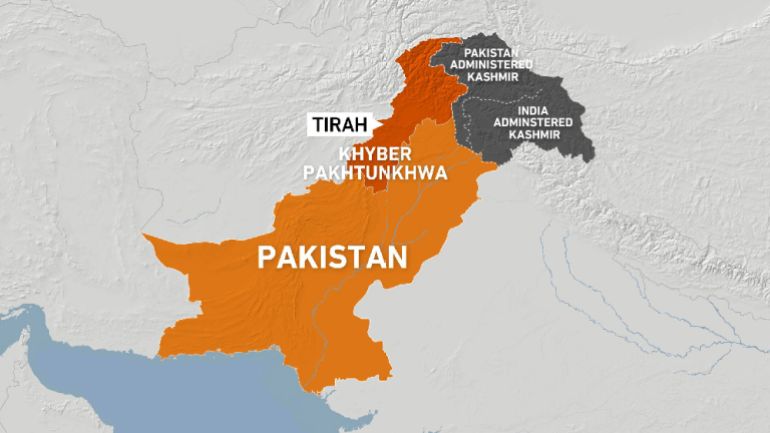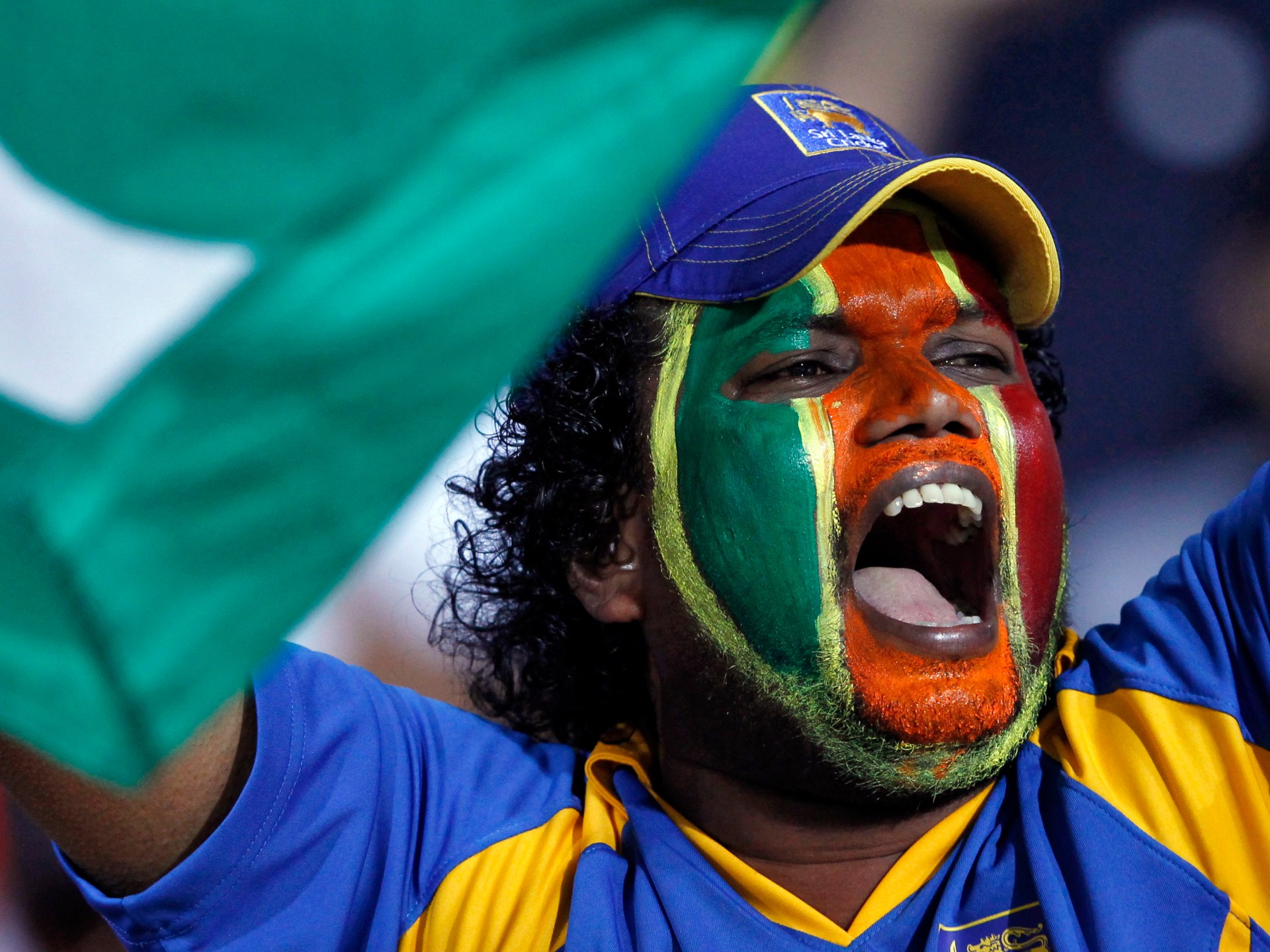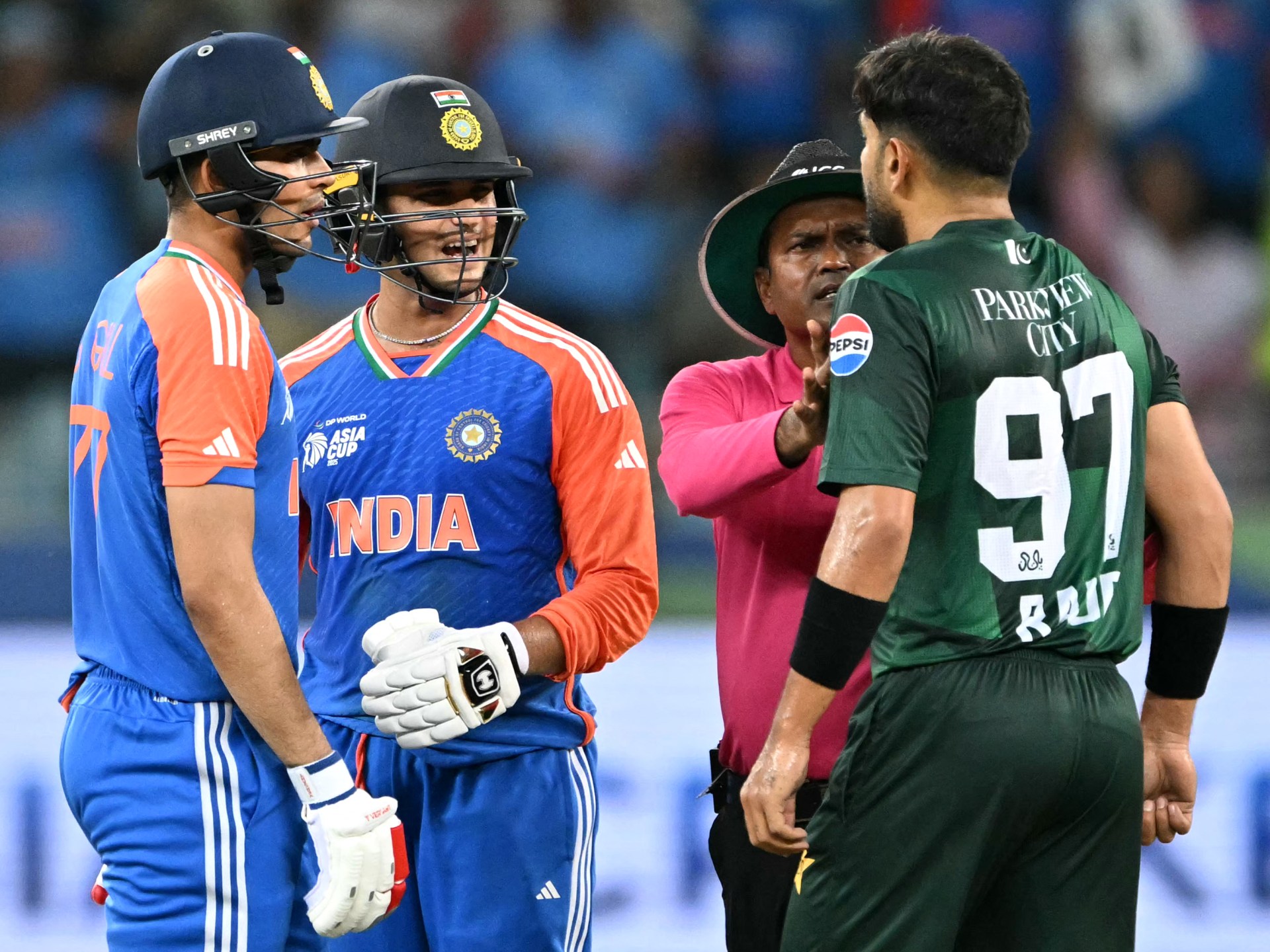India vs Pakistan – ICC Women’s World Cup: Match time, handshake row, rain | Cricket News
Who: India vs Pakistan
What: ICC Women’s Cricket World Cup 2025
When: Sunday, October 5 at 09:30 GMT
Where: R Premadasa Stadium, Colombo, Sri Lanka
How to follow: Al Jazeera Sport will have live build-up from 06:30 GMT ahead of our text commentary stream.
Cricket could take the backseat on yet another Sunday when India meet Pakistan in the ICC Women’s World Cup 2025 in Colombo amid lingering political tension between the South Asian neighbours.
Recommended Stories
list of 3 itemsend of list
The eagerly awaited group-stage fixture will likely be bookended by questions surrounding the now-infamous handshakes between both sides as the captains meet at the pre-match coin toss, and at the end of the match, when both squads traditionally step back on the field.
When India and Pakistan’s men’s teams met in the Asia Cup 2025, the Indian team and its captain did not shake hands with their Pakistani counterparts in all three fixtures at the tournament, leading to furore and backlash that marred the tournament.
A top official of the Board for Control of Cricket in India (BCCI) has not ruled out a “no handshake” policy for the Women’s World Cup fixture, as well.
“Whether there will be handshakes, whether there will be hugging, I cannot assure you of anything,” BCCI Secretary Devajit Saikia told the BBC’s Stumped podcast.
“I cannot forecast anything, but our relationship with that particular hostile country is the same. There is no change in the last week.”
‘Focus on the game’
While it may seem that cricket has been, once again, pushed into the background, both teams want to overlook the controversial build-up and focus on the game instead.
“Obviously, we know what’s happening around us, but we try to stay focused on the game because the World Cup is an event every player waits for,” Pakistan’s captain Fatima Sana said on Saturday.
Sana, whose team were comprehensively beaten by Bangladesh in their opening match, said Pakistan will “focus on the tournament and on what we have come here for” when asked to comment on the “outside noise”.
The last time India played Pakistan at the Women’s World Cup, the players’ off-field interactions left an indelible mark on the game and earned widespread praise from the fans.
At the 2022 tournament in New Zealand, Pakistan’s then-captain Bismah Maroof was surrounded by a group of Indian players as they cooed over her six-month-old daughter Fatima.
Jokes were shared, selfies were taken, and memories were made as players from the rival nations bonded outside their dressing rooms well after the match was over.
Sana, who was part of the Pakistan squad in 2022, was asked whether the players will miss the spirit and camaraderie from three years ago.
“We try to maintain healthy relationships with every team,” Sana replied.
“What happened with Bismah’s daughter, when everyone mingled and enjoyed together – as players, we all like such moments, but the main thing is to stay focused [on the game].”
When the same question was posed to India’s bowling coach Aavishankar Salvi, the journalist was notified that India will not answer it.
However, Salvi did say that India – who beat Sri Lanka in their opening game by 59 runs – will also “focus on the cricket” on Sunday.
#Throwback to this beautiful moment from the 2022 World Cup involving Bismah Maroof’s daughter and Indian girls ❤️#CricketTwitter pic.twitter.com/PuxFEC5O1Y
— Female Cricket (@imfemalecricket) April 25, 2024
‘The world will be watching’
“We want our girls to take it just as a game because the World Cup is a long campaign and there will be a lot of games coming our way,” he said.
“When you enter a big tournament, the area of focus is only cricket, and it’s good to have the players into a good [head] space.”
The fixture is expected to draw huge viewing figures and organisers will expect a sizeable crowd at the ground, as well.
Sana, who also led Pakistan in their match against India in the T20 World Cup 2024, admitted such factors make it a high-pressure fixture and one that “the whole world will be watching”.
“There is pressure but the main thing is how we handle it. We’ll try to focus on our game, execute our plans, and play the way we’ve prepared.”
What happened in the last India vs Pakistan women’s cricket match?
The teams last met in the ICC Women’s T20 World Cup 2024 in Dubai, where India emerged victorious by six wickets.
When was the last time Pakistan beat India in women’s cricket?
Pakistan have only beaten India on three occasions, the last of which came on October 7 at the T20 Women’s Asia Cup 2022. Nida Dar’s all-round performance sealed Pakistan’s 13-run win in Bangladesh.
Will it rain in Colombo during the India vs Pakistan match?
Rain is expected in the early hours of Sunday in Khettarama, the neighbourhood that houses the R Premadasa Stadium in Sri Lanka’s capital.
The weather will remain cloudy throughout the day, with light showers expected to return later in the evening, as well. This could lead to delays or disruption of play.
There was plenty of rainfall on Saturday before Sri Lanka’s match against Australia at the same venue. The persistent rain led to the match being called off without any play.

India vs Pakistan: Head-to-head in women’s ODIs
India hold an 11-0 lead over their neighbours in women’s ODIs. All of India’s wins have come with comfortable margins, including the 107-run victory at the ICC Women’s World Cup 2022 in New Zealand.
Players to watch: India
- Smriti Mandhana: Widely regarded as the best limited-over batters in present-day women’s cricket, Mandhana has swept most women’s ODI records in the past two years. She is the top-ranked ODI batter by a distance and was the leading run-scorer in the format in 2024. The Indian vice-captain has scored four ODI centuries in 2025, the most by any player in the current year.
- Deepti Sharma: The all-rounder poses an equal threat with bat and ball, and has performed well against Pakistan in previous encounters. Sharma’s right-arm off-break bowling will be a big threat for Pakistan’s batters. She took three wickets and scored 54 runs in India’s World Cup opening win against Sri Lanka on Tuesday.
Players to watch: Pakistan
- Sidra Amin: The veteran batter recently became the top ODI century-maker for her country with her sixth ton in the series against South Africa. She comes into the crucial match with good run-scoring form and is regarded as the mainstay of Pakistan’s batting attack against a strong Indian bowling line-up.
- Nashra Sandhu: The unassuming slow left-arm bowler has been Pakistan’s go-to spin option in recent years and is third on the list of top ODI wicket-takers for her country. Sandhu has taken 16 wickets in Pakistan’s nine ODIs in 2025, including six in a match against South Africa on September 22.
Form guide: India
India entered the World Cup with a home series loss and an away series win in the bag. They were tested by Sri Lanka in the tournament’s opening game, but recovered well to begin their World Cup campaign with a win.
Last five ODIs (latest result first): W L W L W L
Form guide: Pakistan
Pakistan’s form has dipped after their five-match unbeaten run at home in the World Cup qualifiers, where they beat Bangladesh, Thailand and the West Indies to book a place in this tournament. Sana’s team lost a home ODI series to South Africa and then suffered a dramatic batting collapse in their opening World Cup game against Bangladesh.
Last five ODIs (latest result first): L W L L W
Team news: India
India are expected to name an unchanged XI for their second match of the tournament.
Predicted XI: Pratika Rawal, Smriti Mandhana, Harleen Deol, Harmanpreet Kaur (captain), Jemimah Rodrigues, Deepti Sharma, Richa Ghosh (wicketkeeper), Amanjot Kaur, Sneh Rana, Kranti Goud, Shree Charani.
Team news: Pakistan
Pakistan are likely to field the same XI that lost to Bangladesh, but there could be a case for replacing Natalia Pervaiz with in-form all-rounder Aroob Shah.
Predicted XI: Muneeba Ali, Omaima Sohail, Sidra Amin, Rameen Shamim, Aliya Riaz, Sidra Nawaz (wicketkeeper), Fatima Sana (captain), Natalia Pervaiz, Diana Baig, Nashra Sandhu, Sadia Iqbal.
